
Being a successful software developer is no easy feat.
Today, innovative tech companies are seemingly everywhere, competing for the attention of users and their place in the market.
However, every company needs someone who can take care of the engineering team, resources, workflow, and many other details crucial for the success of a project.
That is the role of a software engineering manager. In this article, we’ll go into detail about what they do and how that impacts the project’s outcome.
Table of Contents
People management
An engineering manager is responsible for supervising software development projects, but that extends to more than just checking code and handling technical issues.
First and foremost, they have to be able to leverage the abilities of their team members to their fullest potential.
Being a good leader is key to having a productive and happy team, and that kind of team can then produce a quality product.
It’s about managing people so that they feel like they have a structure and purpose to their work, as summed up by this quote from the engineering blog Stay Saasy.

There are lots of elements that are important in people management.
- How well do you know individuals in your team?
- Do you know what makes them productive, satisfied, or comfortable?
- Do you know their strengths and weaknesses?
- How do they work with each other?
That is only the tip of the people-management iceberg, but it comes down to one essential practice—good communication.
Setting up a communication channel is easier than ever with the range of available tools at disposal.
For example, many engineering teams use Slack to keep track of each other, stay informed or seek help with any issues they come across in their work.
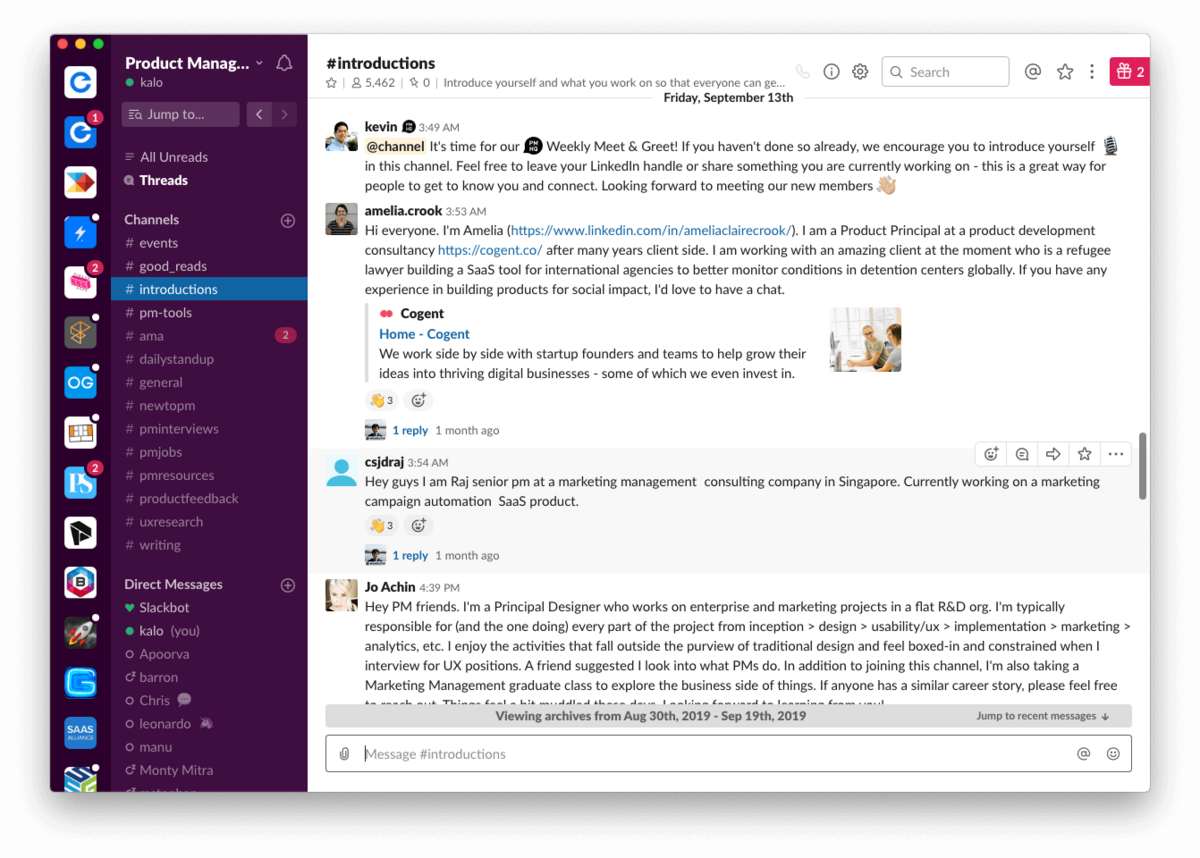
A software engineering manager can organize communication in channels for every project, sub-team, or even technology used in a project.
Communicating with the help of software like Slack can make managing people easier, especially in today’s remote work environment.
Whatever method of communication a software engineering manager uses, their goal should be to get to know the team as much as possible, so they learn how to leverage the members’ strengths.
After all, a strong team is a major contributor to the success of the project.

Fixing issues
Keeping the workflow smooth is one of the responsibilities of a software engineering manager, so they should strive to eliminate every issue that hinders their developers’ productivity or causes frustration.
Let’s take the example of GitLab. They had an issue with a task that they would have normally assigned to a Platform team.
However, that team didn’t exist anymore; it had split up into two separate teams. So, there was no team automatically responsible for that task.
After hearing from the community that this kind of issue is common, they interviewed around 20 software engineers to see what other similar issues plague them often.

Engineers pointed out that one of the main frustrations they encounter in their work is dealing with technical debt—in other words, with bad code, bugs, and inconsistent documentation.
Developers said that rewriting bad code can transform a simple task into a major effort. Eliminating blockers like that is exactly what a software engineering manager should do for their team.
In detecting and fixing issues, software solutions can be very helpful.
For example, automated software development analytics tools like Hatica can give an engineering manager insight into code churn, efficiency, or coding hours.
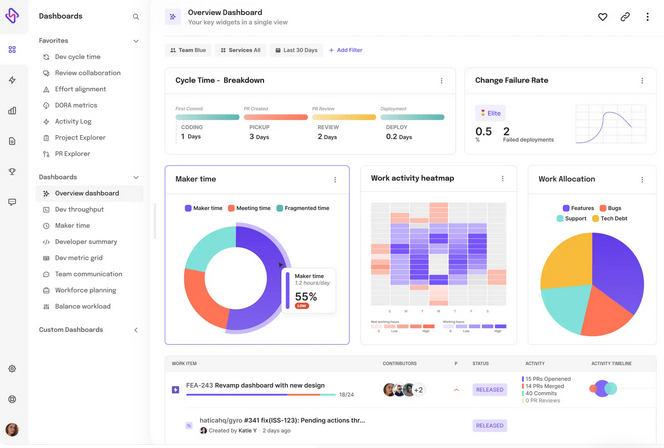
That way, a software engineering manager can see where the issues are, what part of the cycle is lagging, and other valuable information about the workflow.
Removing various roadblocks in the developers’ way is a part of a software engineering manager’s job. That way, he or she helps them succeed at their tasks, which is undoubtedly a priority.
Meeting with managers and stakeholders
A software engineering manager doesn’t have to deal only with people in the engineering team; their job is also to interact with the other participants in the project—managers and stakeholders.
One of the responsibilities of an engineering manager is to keep managers and stakeholders informed about everything relevant to the project, regularly update them and be transparent about the project’s status.
Keeping the superiors informed about the progress is crucial to keeping them happy, and according to statistics, that’s the most important factor in a project’s success.
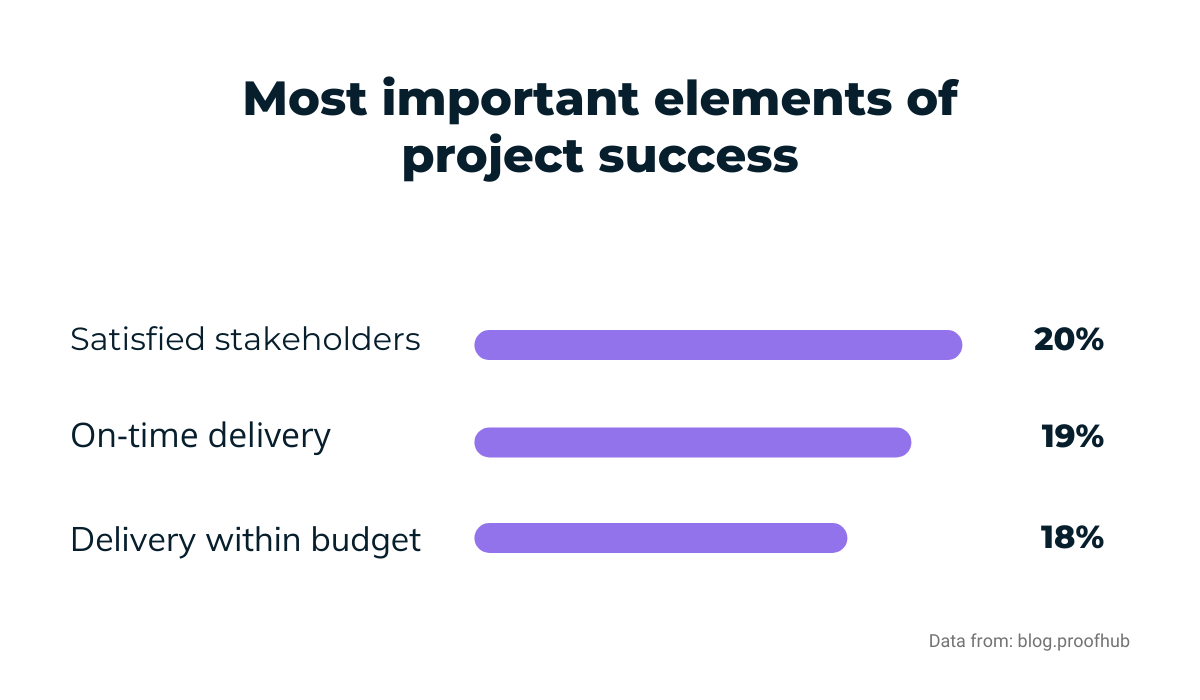
Similar to managing engineers, which we discussed earlier, good communication is the most efficient way to achieve satisfaction with managers and stakeholders.
When having meetings with them, you can present them with reports, metrics, and every other important piece of information with the help of various software solutions.
For instance, software like ProWorkflow can create custom reports that you can use to present what you need at meetings with managers and stakeholders.
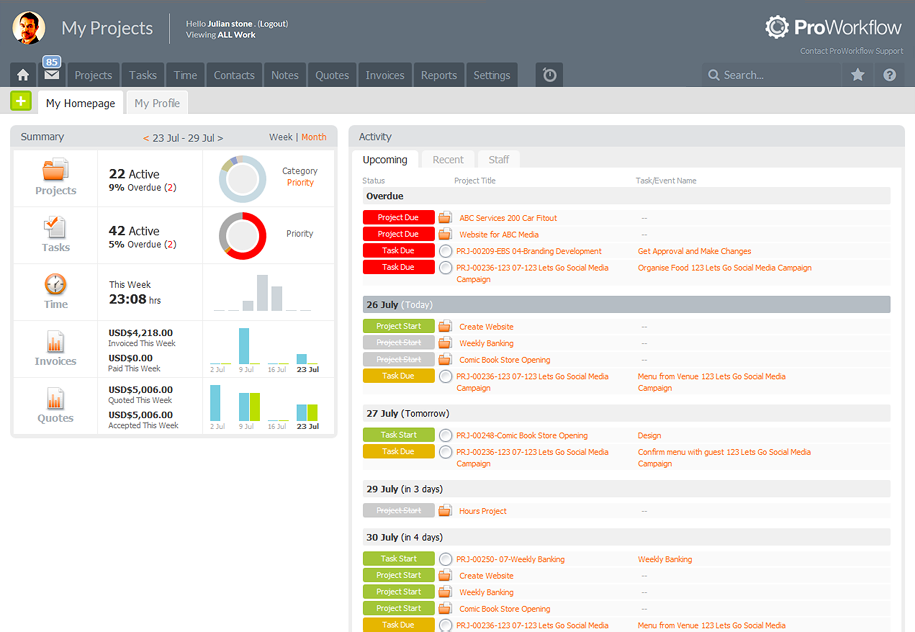
Clear and precise reports can help you avoid misinterpretation and explain what stage the project is in to your superiors.
As a link between engineers and upper management, the software engineering manager should advocate for the former and gain the trust of the latter.
That way, they protect developers from unreasonable expectations and ensure support from superiors in pushing the project forward.
Administrative tasks
Under the umbrella of a software engineering manager’s duties is a wide range of administrative tasks—often tedious but vital parts of the job.
Administrative tasks usually involve a lot of paperwork that a software engineering manager should handle with care and precision. That involves:
- reports
- check-ups
- accounting
- technical documentation
- performance reviews
- budgeting
Of course, companies usually have dedicated departments for some of these areas (like accounting). However, a manager should know their way around administrative tasks to efficiently oversee and control the project.

Get unreal data to fix real issues in your app & web.
One of the tasks we mentioned above is budgeting. The manager often has an allocated budget for the project and the projected costs.
They should be able to realistically estimate individual costs for the project elements and keep everything within budget.
For that, budgeting software can be very useful.
For example, Harvest has features that allow you to track costs and the budget, review past data, and make estimates.
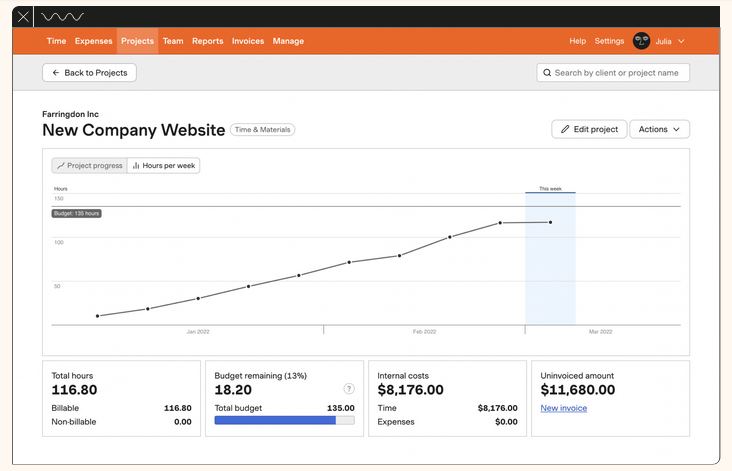
As you can see above, the software tracks time, total and remaining resources, and the amount that isn’t invoiced. That kind of data can help a software engineer manager to stay on top of the project and keep it profitable.
You’d be hard-pressed to find a manager whose favorite part of the job is to take care of administrative tasks. However, a software engineering manager can’t be successful without finding time to handle them with attention and care.
Project management
Good project management is crucial; without it, developers may work on a project without guidance or specific goals, resulting in frustration and inefficiency.
A software engineering manager should provide the team with purpose and a clear goal that they’re working towards, as well as realistic steps that are needed to reach that goal.
According to a survey by Carnegie Mellon University that was cited on ProofHub, good project management can transform an organization; key performance indicators (KPIs) increase significantly, scheduling adherence is up by 50%, and productivity can rise by 60%.
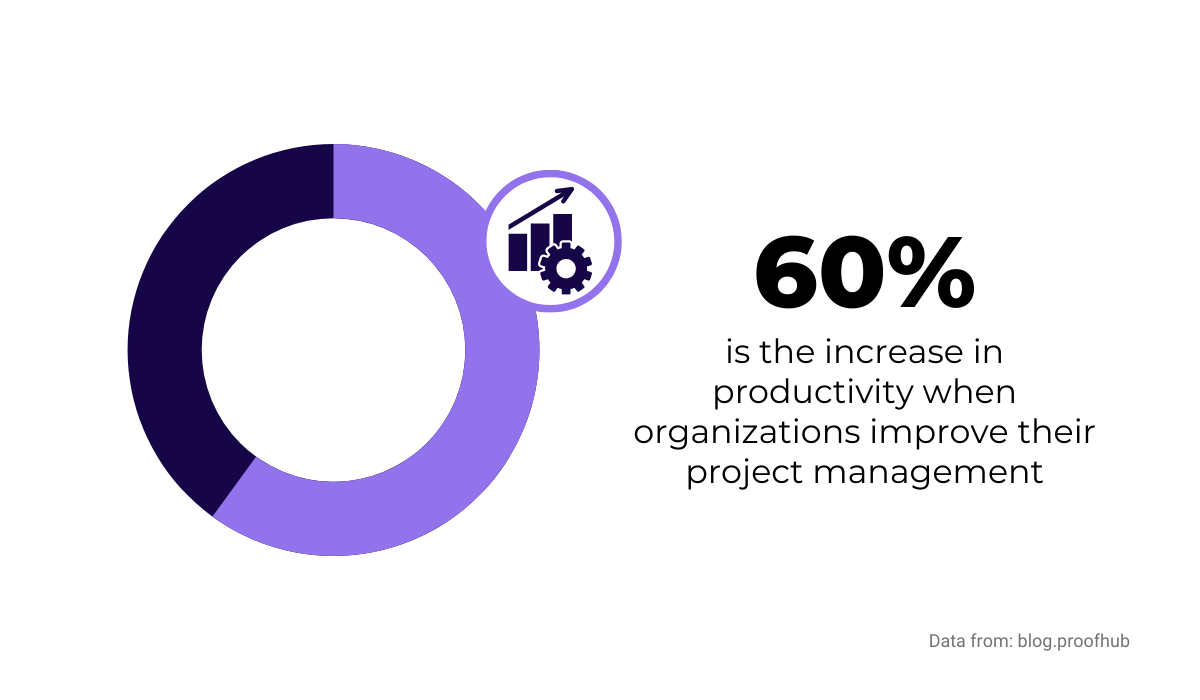
A software engineering manager can choose different practices and methodologies for managing a project; some choose Scrum, and others opt for Waterfall or Agile.
Scrum is one of the most popular and well-loved Agile methodologies. Learn more about it from the highly acclaimed software development agency DECODE.
Whatever it is, it’s important to stay consistent to avoid confusion and improve efficiency.
For example, many development teams work in Agile, which focuses on delivering individual parts of the software rather than the software as a whole.
That way, among other things, the team is more flexible in their work, and implementing changes is easier.
Below you can see an Agile methodology workflow.
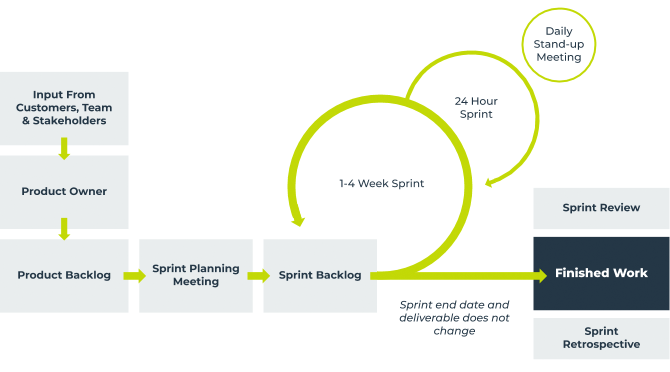
A software engineering manager should ensure that the practices in software development are consistent with the chosen framework. If the teams work in Agile, their processes should really be Agile.
Planning and controlling the workflow should be high on the list of a software engineering manager’s priorities.
Release management control
Release management includes several stages and practices, but delivering a quality product is the desired final outcome.
Whether the product is an app, a website, or an update, release management should include the necessary steps to ensure that the product reliably reaches the consumers.
A software engineering manager should control that process.
The first stage in release management is the request for changes, features, or a new build. A software engineering manager should evaluate requests and decide which ones are realistic for the project’s state.
The next stage is the plan. In it, the manager plans the release structure and creates a workflow for the development team that includes milestones and responsibilities. The plan should keep the team focused on a clear objective.
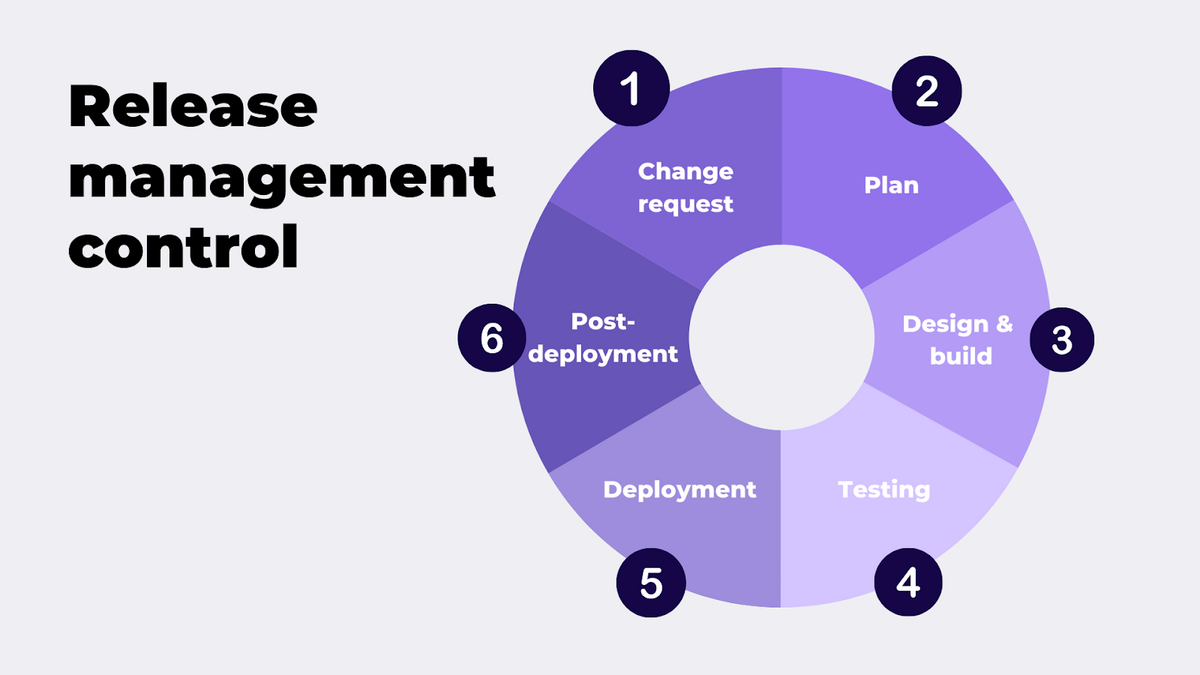
The design and build stage is where the developers write code and build the software.
The testing stage is where the software is polished, bugs are fixed, and developers continue to work on the product until it’s approved for deployment.
In the deployment stage, the users can use the product. This stage also includes training and educating users on how to use the product.
The post-deployment stage is where the support is provided to the users, feedback is collected, as well as requests for new features and new changes.
As you can see, release management control can be complex, and a software engineer manager needs to stay on top of many factors, so everything goes according to plan. Planning the process is essential; you can do it in a simple spreadsheet.

The alternative is to use a software solution like BuildMaster, which has features for building projects, testing, deploying, releasing, and many more that can help manage this process.
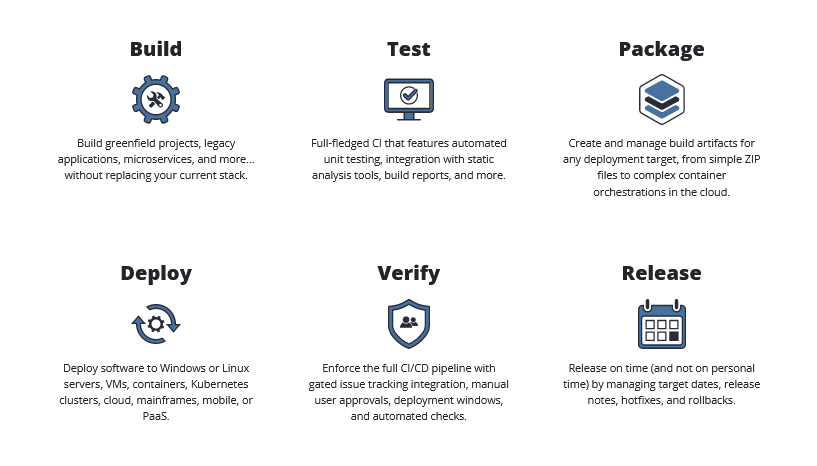
That’s up to personal preference; the crucial thing is that a software engineering manager should be able to control every stage of the release management process so that the users can get a quality product.
Code quality assurance
Any software product can end up having flaws regardless of the care and focus put into its development.
Human errors are simply a fact of life. Nevertheless, a good software engineering manager should ensure that the code is up to standard.
If it’s not, the quality of the product itself could be compromised, and the consequences could be costly—like they were for Starbucks in 2015.

Above, you can see one of the thousands of tweets that were posted after a massive computer outage at Starbucks due to a daily system refresh.
Because of the outage, employees gave out free drinks to customers, and some stores even shut down for a part of the day, causing millions of dollars in losses in just a few hours.
Quality assurance can prevent problems with the software and ensure that the quality of the software is maintained throughout its lifecycle.
The process encompasses both testing and quality control. Its purpose is to detect deviations, decreases in performance, various bugs and issues, etc.
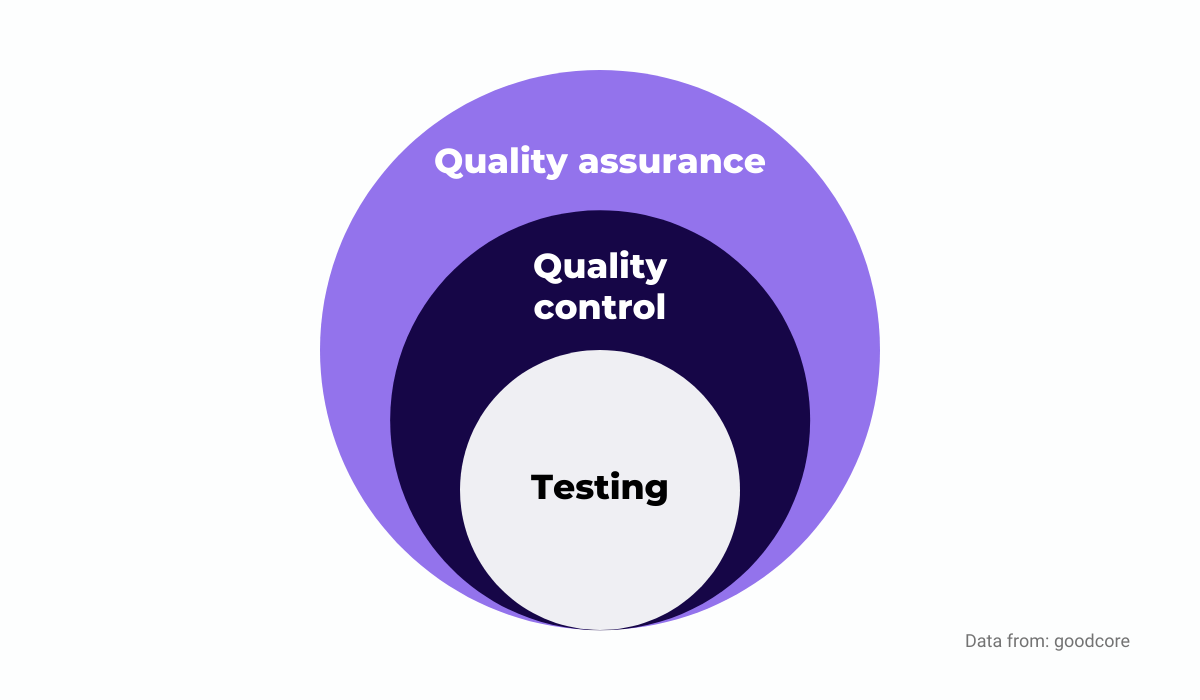
When the issue is found, the reporting can be tedious, with a lot of back-and-forth between the QA team and the engineers. However, the whole process can be much simpler with software like Shake.
Shake automatically pulls and attaches all the necessary data to a bug report, so developers get everything they need to know to fix the issue.
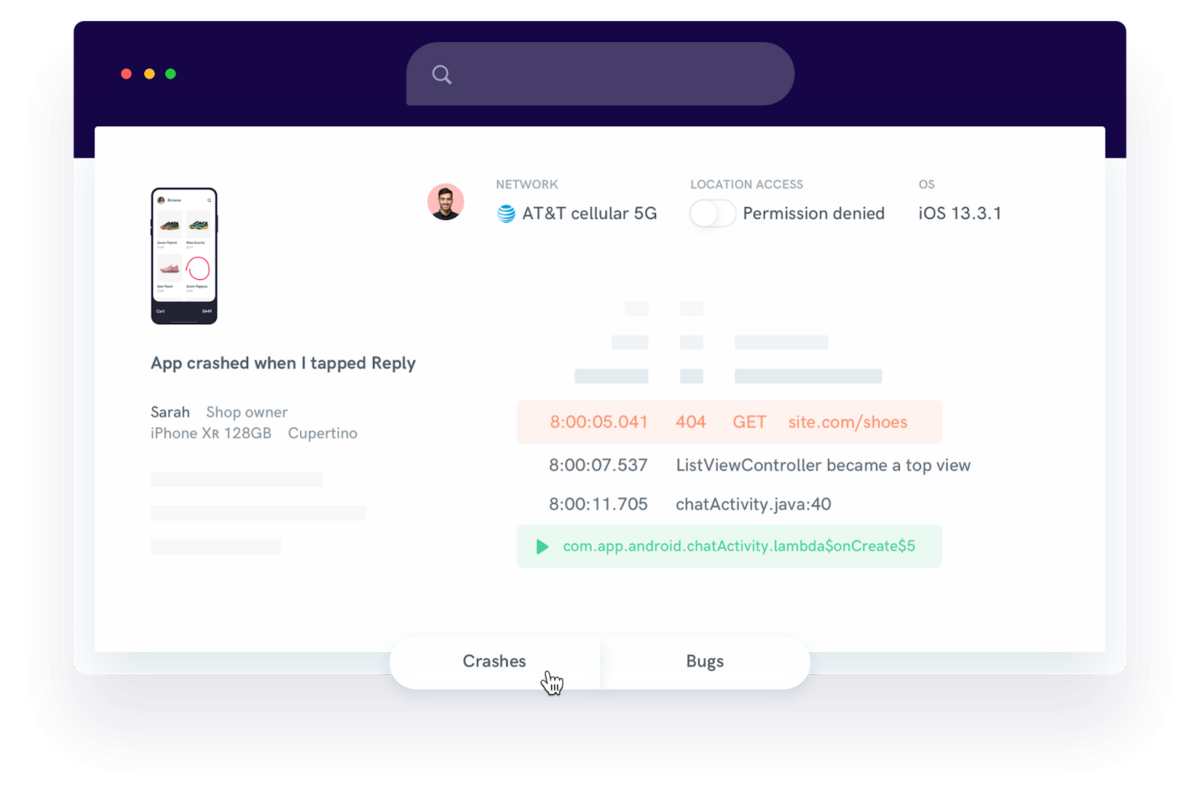
You can even attach any video, photo, PDF, audio, or other file types to a report without exiting the app.
Code quality assurance is a task that a software engineering manager should take seriously; the consequences of neglecting it could be severe, both for the project and for the users.
Recruiting
Attracting top developer talent and forming a great engineering team is a big part of leading successful projects.
However, recruiting engineers isn’t that easy.
According to the Consumer Technology Association study, cited on 3pillarglobal, IT companies struggle to find qualified employees.

Recruiting is even more important considering the inevitable churn rate of developers that every company has.
That’s why software engineer managers in big companies like Asana put a lot of thought into methods of engineer recruiting.
Asana is a web and mobile platform for managing work, tasks, and projects, and, like many big companies, they’re in constant need of skillful software engineers.

As Greg Sabo, their Land Area Engineering Lead, says, they employ various methods for recruitment, from word of mouth to attending conferences.
They also recruit engineers right from the universities by visiting campus events, career fair events, and even reaching out to individual students one-on-one.

Capture, Annotate & Share in Seconds with our Free Chrome Extension!
Asana invested in creating an internship program as another recruitment method.
The company allows young candidates to learn and work, and many engineers decide to stay at the company. You can see the generation of 2019 in the photo below.

A software engineering manager is a leader, but he isn’t expected to recruit every engineer in the team single-handedly; the company as a whole has that responsibility.
However, the manager should be involved in the process—after all, they’ll be working closely with every individual in the team.
Conclusion
The task and responsibilities of a software engineering manager make up a long list. And, as you saw in this article, those aren’t simple tasks.
Managing engineers, keeping stakeholders happy, fixing various issues, keeping an eye on administration, getting deep into project management, taking care of release management, code quality assurance, and recruiting… It’s a lot.
However, that’s exactly why it’s important that the whole team, from top to bottom, understands the role of a software engineering manager.
Handling those tasks efficiently is crucial in achieving success with software projects.





